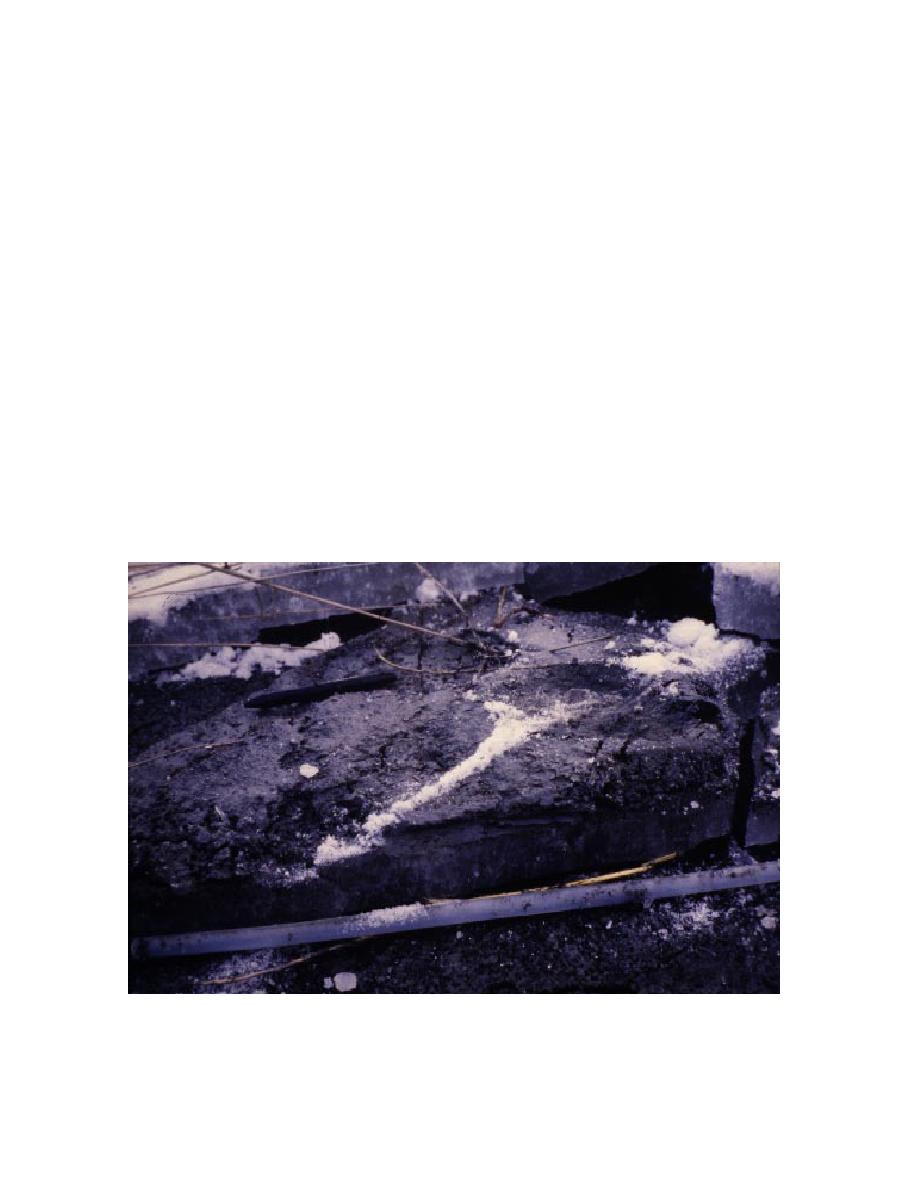
and marsh water increases the amount of sus-
taminated areas, fresh sediment will be exposed
pended sediment in the ponds and marshes, and
and introduced into them, potentially increasing
provides the primary source for deposition.
the amount of WP in ebb discharge. Gully erosion
Controls on sedimentation rates at any par-
may also threaten the integrity of other remedial
ticular location include elevation, vegetation that
methods. For example, capping measures (i.e., geo-
traps sediment (e.g., Reed 1995), and the fre-
textiles and AquaBlock) may be undercut and
quency, height and duration of inundations by
damaged. Similarly, hydrological and physical
sediment-laden waters (e.g., Vince and Snow 1984;
changes to the ponds and mudflats may result
Reed 1989, 1995; Reed and Cahoon 1992; French
from dredging and cause rapid extension of the
and Spencer 1993). The distance from the source
gullies into the dredged areas.
also plays a role in some areas, as sediment can be
deposited or eroded during flood and ebb, alter-
ing the amount in suspension. Large amounts of
SEDIMENTATION AND
sediment may be deposited locally from ice raft-
NATURAL ATTENUATION
ing of materials plucked from other locations
OF WP BY BURIAL
within the Flats (Fig. 36).
Suspension settling through flocculation takes
place during slack high tide and through the early
Tidal inundation
Several factors (see Lawson et al. 1996) influ-
stages of the ebb cycle. In ponded areas, it also
ence the timing, magnitude and duration of tidal
happens between tidal floods when turbulence is
flooding and runoff, which in turn control sedi-
low, allowing fine-grained particles to settle out
of the water. Therefore, the longer calm condi-
ment influx into ponds. The typical tidal flooding
tions can be maintained, the greater is the time
cycle begins with a rise in the water level in the
Eagle River and the gullies. This water gradually
over which deposition can occur. The mixing and
floods over the banks of the gullies and river,
exchange of tidal flood water with existing pond
a. Sediment layer frozen onto an ice block transported during the November 1994 flooding tides.
Figure 36. Ice rafting at ERF.
47



 Previous Page
Previous Page
